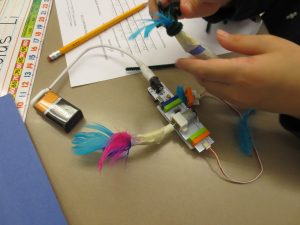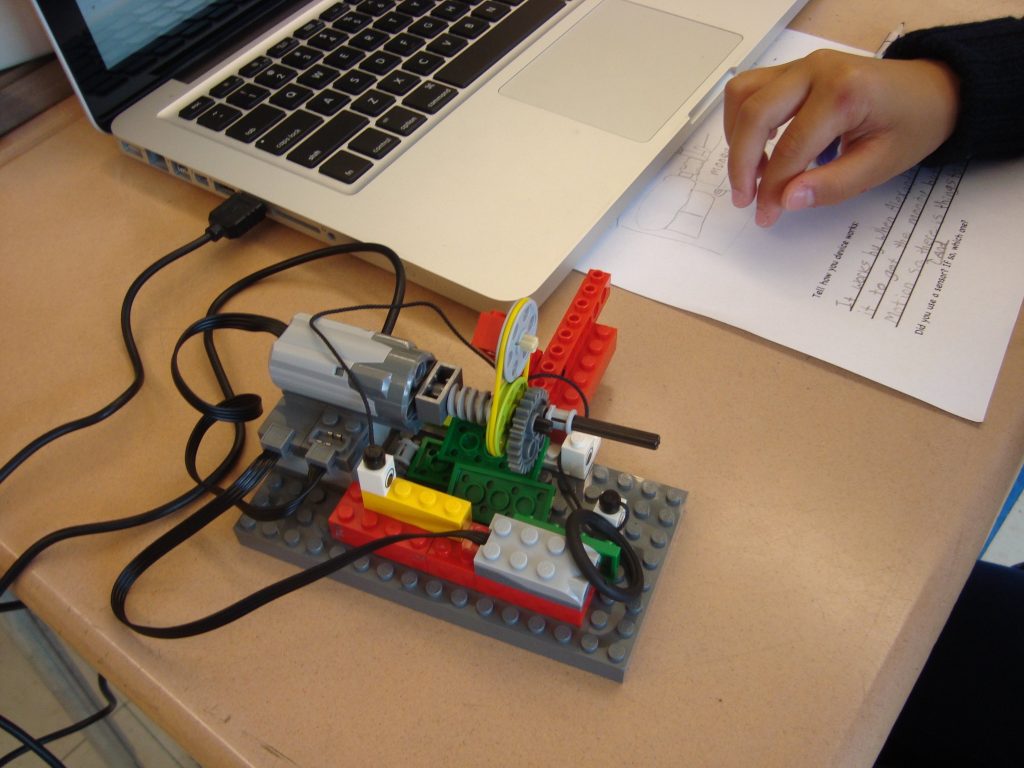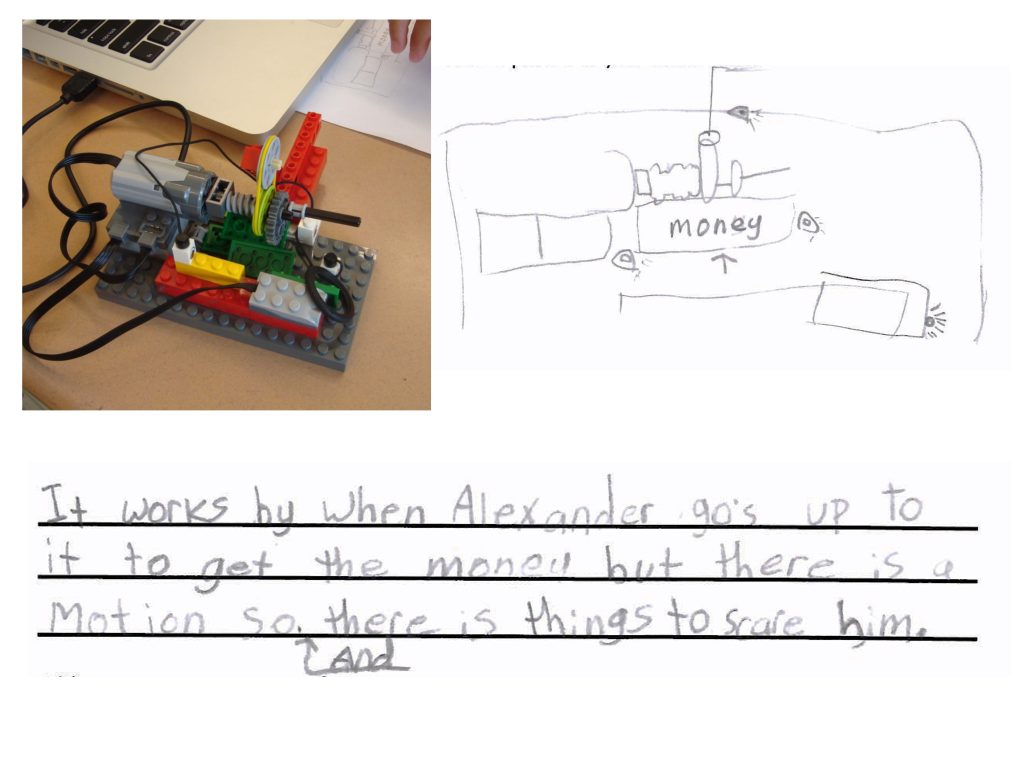by Bridget McCaffrey
Last year, the Center for Engineering Education and Outreach began a relationship with the Malden Public Schools, going in to their Linden STEAM Academy, a K–8 innovation school that places more of a focus on “hands-on”, project-based learning. Starting in January of 2015, members of the CEEO began collaborating with the teachers, providing monthly professional development sessions to support the teachers as they introduced Novel Engineering, an integrated approach to teaching literacy and engineering, to their students. Novel Engineering (NE) uses the literature that teachers are already using in the classroom—picture books, novels, or expository texts—as a basis for engineering design challenges.
In addition to the professional development workshops, the CEEO staff and students spend one full day each week at Linden to visit the classrooms and talk with the teachers as they implement the NE . Most of Linden’s teachers from kindergarten through fourth grade have tried Novel Engineering in their classrooms, using books such as The Relatives Came by Cynthia Rylant, Danny, Champion of the World by Roald Dahl, and Peter’s Chair by Ezra Jack Keats.
Barbara Bratzel, an educator in residence at the CEEO, is taking a one-year leave of absence from her regular job as a science teacher at the Shady Hill School in Cambridge, MA. Part of her work this year has been to work with the K–5 teachers, focusing on supporting teachers and students as they implement Novel Engineering, often using various LEGO robotics kits, such as MINDSTORMS, NXT, and WeDo.
Several second-grade classrooms, for example, tied their engineering work to their science curriculum. The students were studying bats, learning from non-fiction texts that bats could not stand, but rather hung from their feet to sleep. The students, using “bats” made from clothespins and paper as models, planned, sketched, and constructed beds for their bats.
A third-grade class read the chapter book Tornado by Betsy Byars, about a stray dog that is found by a family following a tornado. In one chapter, the dog, Tornado, accidentally laps up into his mouth a small pet turtle that was set out in a dish of water on the porch. Students in this class brainstormed ideas that would help the turtle stay safe in the water dish, then designed and built their solutions using LEGO NXT robotics. (Read the related article by journalist Chris Berdik here: http://www.slate.com/articles/technology/future_tense/2015/12/novel_engineering_project_teaches_kids_about_engineering_by_using_fiction.html)
Another person at Linden is Brian O’Connell, a Tufts doctoral student in mechanical engineering and interested in makerspaces as interactive learning environments. He has lent his expertise to the Linden STEAM Academy, creating a “maker cart” for the students. The cart, a rolling stack of shelves, is supplied with tools that actual engineers might use, such as digital calipers, digital scales, wrenches, and snips. “It’s about the tools,” says O’Connell, “and trying to inspire them to try different things; to do non-standard stuff and think more about what they are engineering.” He hopes the maker cart will help students feel and think more like real engineers, “moving beyond building things with an arts-and-crafts mindset toward more of an engineering mindset.” O’Connell plans to interview teachers on how the maker cart was received and used.
Aaron Johnson, a post-doctoral research associate at the CEEO, is also visiting classrooms at Linden. He is working with a new second-grade teacher who is implementing Novel Engineering in her class for the first time. Her students read the book Muncha! Muncha! Muncha! by Candace Fleming, in which a backyard gardener tries to prevent rabbits from eating his vegetables. Using LEGO and craft materials, the students chose to design solutions to either help the bunnies get into the garden, or help the gardener keep the bunnies out.
Johnson is conducting research to learn more about how the teacher engages in “responsive teaching” during these engineering activities. “Responsive teaching,” says Johnson, “is an instructional approach in which teachers base their pedagogical moves and objectives on what their students are doing and saying.” In this way, rather than having everything for a lesson or unit mapped out ahead of time, teachers elicit students’ thinking around a topic and respond appropriately to support their work. “At the CEEO,” continues Johnson, “we have begun investigating how responsive teaching in engineering occurs with teachers who are new to engineering and teachers who have done engineering activities for a few years. Currently, I am interested in the connection between the two—how this second-grade teacher evolves in her responsive teaching as she gains experience with engineering.”
The CEEO will maintain its relationship with the Linden STEAM Academy this year, with visiting CEEO members continuing to use robotics to practice engineering, support the maker cart, help teachers implement Novel Engineering in their classrooms either for the first time or support teachers who have already gained experience in the approach.



